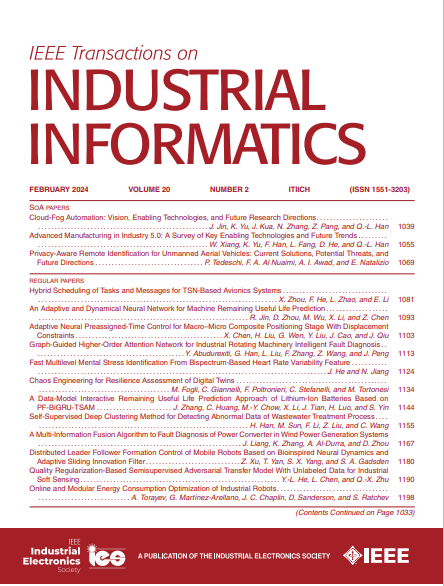Learning Deep Feature Correlation for Microscopic Structured Light Imaging
IF 9.9
1区 计算机科学
Q1 AUTOMATION & CONTROL SYSTEMS
引用次数: 0
Abstract
Structured light imaging is a typical technique for industrial 3-D microscopic measurement. Extensive research on structured light codecs has been conducted to accurately correlate camera and projector pixels. However, these methods suffer significant degradation when measuring low-reflectivity and complex surfaces. This article introduces a deep correlation-based cascade structured light network (CasSLNet) that utilizes deep phase and column features to calculate correspondences at the subpixel scale. To mitigate the huge computational cost of full correlation, a coarse-to-fine approach is proposed. Specifically, multiscale features from the camera observation sequence and the 1-D encoding pattern are extracted through a pseudosiamese network, and cascade cost volumes are constructed. An initial column map is then regressed from the low-resolution column cost volume. Based on this, an iterative update operator is introduced to refine initial estimates, resulting in a full-resolution column map. Furthermore, a structured light dataset has been collected and experiments have been conducted on a typical structured light imaging platform. Experimental results demonstrate that CasSLNet outperforms both traditional and state-of-the-art deep learning-based methods.微观结构光成像的深度特征关联学习
结构光成像是工业三维显微测量的典型技术。对结构光编解码器进行了广泛的研究,以准确地关联相机和投影仪像素。然而,这些方法在测量低反射率和复杂表面时存在明显的退化。本文介绍了一种基于深度相关的级联结构光网络(CasSLNet),该网络利用深度相位和列特征在亚像素尺度上计算对应关系。为了减轻完全相关的巨大计算成本,提出了一种由粗到精的方法。具体而言,通过伪连网提取相机观测序列的多尺度特征和一维编码模式,构建级联代价体。然后从低分辨率列成本量回归初始列映射。在此基础上,引入迭代更新算子来细化初始估计,得到全分辨率列图。采集了结构光数据集,并在典型的结构光成像平台上进行了实验。实验结果表明,CasSLNet优于传统和最先进的基于深度学习的方法。
本文章由计算机程序翻译,如有差异,请以英文原文为准。
求助全文
约1分钟内获得全文
求助全文
来源期刊

IEEE Transactions on Industrial Informatics
工程技术-工程:工业
CiteScore
24.10
自引率
8.90%
发文量
1202
审稿时长
5.1 months
期刊介绍:
The IEEE Transactions on Industrial Informatics is a multidisciplinary journal dedicated to publishing technical papers that connect theory with practical applications of informatics in industrial settings. It focuses on the utilization of information in intelligent, distributed, and agile industrial automation and control systems. The scope includes topics such as knowledge-based and AI-enhanced automation, intelligent computer control systems, flexible and collaborative manufacturing, industrial informatics in software-defined vehicles and robotics, computer vision, industrial cyber-physical and industrial IoT systems, real-time and networked embedded systems, security in industrial processes, industrial communications, systems interoperability, and human-machine interaction.
 求助内容:
求助内容: 应助结果提醒方式:
应助结果提醒方式:


